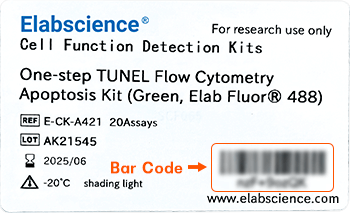α-Glucosidase (α-GC) Activity Assay Kit (E-BC-K821-M)

For research use only.
| Detection Principle |
α-Glucosidase (α-GC), also known as α-D-glucoside hydrolase, is widely distributed in nature, with a wide variety of species and different properties, and exists in almost all organisms. It has important physiological functions in carbohydrate metabolism in animals, plants and microorganisms. If α-GC is deficient, it leads to severe glycogen metabolism disorders and excessive glycogen accumulation, which can cause Pompah's disease (an autosomal recessive inherited glycogen storage disease, also known as glycogenosis type II). Long-term low α-GC activity in human tissues can cause muscle fiber destruction and muscle atrophy. The detection principle of this kit is that the chromogenic substance generated by the substrate reaction catalyzed by α-glucosidase has the maximum absorption at 400 nm, and the enzyme activity of α-GC can be reflected by measuring its OD value at 400 nm. |
| Synonyms | α-GC |
| Sample Type | Tissue,Fungus |
| Detection Method | Colorimetric method |
| Detection Instrument | Microplate reader (390-405 nm, optimum wavelength: 400 nm) |
| Research Area | Glycolysis And Lipid Metabolism |
| Storage | This product can be stored at -20°C for 12 months with shading light. |
| Valid Period | 12 months |
| Sensitivity | 0.35 U/L |
| Detection Range | 0.35-33.43 U/L |
| Precision | inter-assay CV: 4.2-6.6% | intra-assay CV: 4.4-5.7% |
| Sample Volume | 20 μL(tissue/fungus homogenate) |
| Assay Time | 50 min |
The recommended dilution factor for different samples is as follows (for reference only):
| Sample Type | Dilution Factor |
|---|---|
| 10% Mouse small intestine tissue homogenization | 1-2 |
| 10% Rat kidney tissue homogenization | 1-2 |
| 10% Oranges seeds homogenization | 1 |
| 10% Mouse kidney tissue homogenization | 1-2 |
| 10% Apricot abalone mushroom tissue homogenization | 1 |
| 10% Pear seeds homogenization | 1 |
| 10% Corn tissue homogenization | 1 |
| 10% Apple seeds homogenization | 1 |
The diluent is normal saline (0.9% NaCl) or PBS (0.01 M, pH 7.4). For the dilution of other sample types, please do pretest to confirm the dilution factor.
Other Clones
{{antibodyDetailsPage.numTotal}} Results
-
{{item.title}}
Citations ({{item.publications_count}}) Manual MSDS
Cat.No.:{{item.cat}}
{{index}} {{goods_show_value}}
Other Formats
{{formatDetailsPage.numTotal}} Results
-
{{item.title}}
Citations ({{item.publications_count}}) Manual MSDS
Cat.No.:{{item.cat}}
{{index}} {{goods_show_value}}
-
IF:{{item.impact}}
Journal:{{item.journal}} ({{item.year}})
DOI:{{item.doi}}Reactivity:{{item.species}}
Sample Type:{{item.sample_type}}
-
Q{{(FAQpage.currentPage - 1)*pageSize+index+1}}:{{item.name}}





